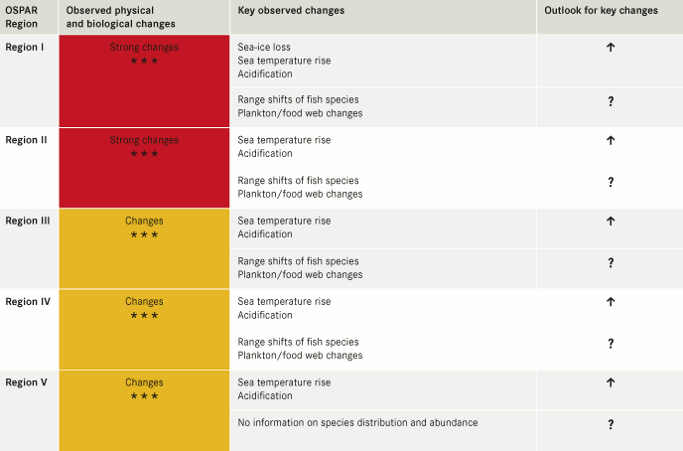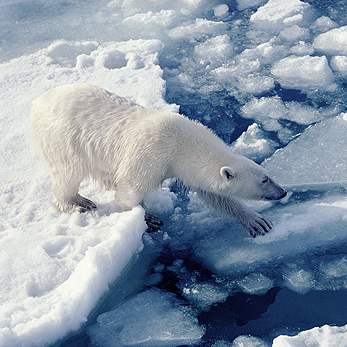
What happens next?
Climate change and ocean acidification add urgency to OSPAR’s work
Impacts of climate change are now becoming evident. While the nature and rate of these impacts are uncertain, rising sea temperature and increasing acidification represent major threats to marine ecosystems in the OSPAR area. Even projections based on the more moderate emissions scenarios imply major environmental, economic and social impacts. This adds urgency to OSPAR’s work to reduce existing pressures and so increase the capacity of ecosystems to cope under a changing climate. The OSPAR network of marine protected areas (MPAs) will have an important role to play in helping to maintain and restore the capacity of ecosystems to resist and recover from the impacts of ocean climate change.
OSPAR will need to recognise opportunities to mitigate and adapt to climate change. Mitigation and adaptation on land and at sea will alter the distribution and intensity of human pressures on marine ecosystems. OSPAR offers a framework for managing and regulating the increasing demands for new uses of the sea, such as the generation of renewable energy and carbon capture and sequestration. Marine spatial planning and integrated coastal zone management provide additional tools. Attention should be given to conservation and restoration of natural coastal carbon sinks.
To account for the changing pressures on the marine environment and its increased vulnerability, OSPAR will need to adapt its current policies and objectives for the protection of the marine environment and to strengthen its cooperation with other international organisations on the management of uses of the sea (e.g. the North East Atlantic Fisheries Commission and the International Maritime Organization).
Monitoring and assessment are a priority
The nature, rate and impacts of climate change differ across the OSPAR area. The increase in temperature and acidification will be higher in northern areas (Regions I and II) than southern areas (Regions IV and V). Threats to Arctic biodiversity are particularly imminent with sea-ice loss profoundly affecting ice-associated marine life, and projected rates of acidification suggesting adverse ecosystem impacts within the next decade. The differences between the Regions imply a need to understand better the potential climate change impacts at both the regional and local level, as well as the risk of so-called ‘tipping points’ being reached. These thresholds represent the point at which a change is no longer linear and reversible, but abrupt, large and potentially irreversible over time-scales relevant for the well-being of contemporary generations. Better links between science and the development of local policy on risk assessment are essential. OSPAR will need to undertake the following actions:
- Enhance knowledge about the vulnerability of species, habitats and ecological processes and their interaction with pressures from human activities.
- Work with partner organisations (e.g. the International Council for the Exploration of the Sea and the Intergovernmental Oceanographic Commission) to put in place systems for assessing climate change. This should include scenarios of potential impacts and methods and indicators to monitor and assess the progression of climate change impacts particularly at regional scales.
- Give priority to monitoring and assessment of ocean acidification and its effects on marine ecosystems.
Selected climate driven changes in the OSPAR Regions


